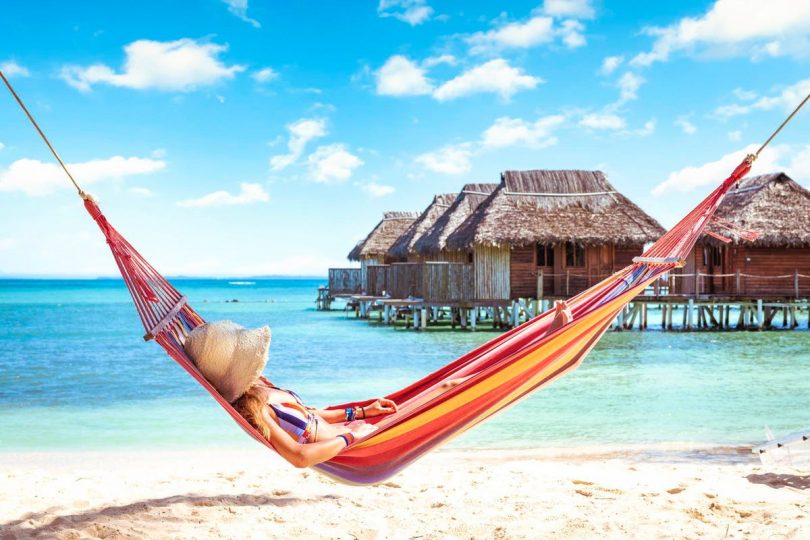Have you ever fantasized about quitting your job and moving to a country where it’s so cheap you don’t need to work? International Living advises people on how to do just that in its magazine and website, which shows readers how to find, embrace and celebrate the best the world has to offer—from good-value living to great foods to warm year-round weather to interesting cultural traditions. The company has just announced its Annual Global Retirement Index, listing the 25 cheapest and best places to live around the globe. And this list isn’t just for retirees: It’s a great resource for anyone who has ever thought of moving abroad.
“Americans today are looking long and hard at their own values, and at the way they spend their days and many are coming to the conclusion that they need a change. They want more time with family and friends, more time to pursue their interests, more freedom to arrange their days the way they prefer,” says Jennifer Stevens, International Living’s executive editor. “But it can be hard to know how to afford that life. Overseas, in the right places, it’s easy. It can provide a path to that better-balanced, more affordable life folks are craving.”
Granted, the concept of encouraging Westerners to escape the high cost of living by moving to developing countries has received some backlash, with critics calling this “modern-day colonialism,” but International Living says that living well for less is only one reason a destination finds a place on its Global Retirement Index. “We live in an ever-more-connected, global world. And here at International Living, we celebrate that. We give readers the practical tools they can use to embrace a more international life,” says Dan Prescher, senior editor at International Living. “Being an expat isn’t about recreating your U.S. life in a new place. It’s about creating a new life in a place that excites and suits you, where you can expand your horizons and enjoy an adventure that you wouldn’t have back home.”
According to Prescher, International Living points people to communities where they can feel safe and comfortable, where the local culture is inclusive and welcoming. In addition, International Living actively encourages people to learn the local language when they settle in a new country, to become integrated into their communities, to embrace the local traditions and to honor and celebrate the cultural habits and holidays there. “The most successful—the happiest—expat retirees we know appreciate that their dollars stretch, sure. But what these expats say they love most about their adopted homes is the excitement that comes with learning a new culture—they celebrate the new experiences they’re having, the new music, the new foods, the new traditions, the new connections,” says Prescher. “They become integral parts of their communities with a network of friendships that includes as many locals as it does fellow expats.”
On a hammock in Panama, which was named the top place to quit your job and live abroad on the cheap … [+]
In addition, many of the countries on International Living’s Global Retirement Index actively court expats with incentives designed to entice them to come and to stay. “So we show readers how to best match what they’re looking for in a retirement lifestyle with a destination where they’re most likely to find it,” says Prescher. “Cost of living is just one of many requirements you should consider when you’re evaluating your options abroad.”
For instance, one place that has recently started courting expats is Thailand, which helped put the country high on this year’s list, thanks to a new visa program.
So read on to find out about the top 11 places on the list that will make your dreams come true. To see the full list of 25 locations, you can read the Annual Global Retirement Index here.
The mix of old and new in Panama City.
1. Panama
Why: One of the world’s safest, most affordable and most welcoming countries, Panama tops the Annual Global Retirement Index for 2022. It’s actually the 11th time that Panama has taken the top spot in the 31 years that International Living has been publishing the list. “It’s no surprise to me that this tiny powerhouse has—once again—taken the number one spot in International Living’s Annual Global Retirement Index,” says Jessica Ramesch, International Living’s Panama correspondent. “When it comes to overall benefits and value, Panama is very tough to beat.” Some of the advantages: The currency is the U.S. dollar, the medical care is top-notch, the infrastructure is first-rate, internet access is good and the country is easily accessible from the U.S.
Over the past couple years, there have been some ups and downs in Panama (and all over the world), but the country has rebounded. “These days it’s back to business here. The country is busy welcoming tourists, new residents and new investment, too,” says Ramesch. Panama actively woos foreigners: You won’t pay income tax on funds earned outside Panama, there are several easy options for getting a visa or residency and real estate taxes are really low.
Where to Move: Panama City is Central America’s most modern metropolis, but that’s not all the country has to offer. “The cool mountain towns of Cerro Azul, Sorá and El Valle are a one- to two-hour drive from the city. The unspoiled Caribbean beaches of Portobelo are about two hours away by car. Or I can fly to my favorite Caribbean archipelago in an hour,” says Ramesch. Two other places to note: the lush highland haven of Boquete and Coronado, a beach town just an hour’s drive from the capital. “I like [Coronado] so much I bought an apartment there, and am packing up to move as we speak” says Ramesch. “Coronado is home to one of Panama’s most active and welcoming expat communities. I’m not even there yet, and I’m already getting invites to potlucks and happy hours.”
The Cost: A single person can live in Panama for as little as $1,590 a month. The country also has affordable and high-quality healthcare: You’ll pay just $10 to $20 to see a doctor. And it’s cheap to get around: “For 35 cents I can hop on Central America’s only metro line and zip [to downtown Panama City] in 10 minutes,” says Ramesch.
Picture yourself living here: in the hills of Guanacaste, Costa Ric.
2. Costa Rica
Why: Coming in second on the list for 2022 is Costa Rica, where the national motto is “Pura Vida” (pure life). “Sure, the secret has long been out about Costa Rica’s popularity. But that does not stop millions of visitors and new foreign residents from discovering its special brand of enchantment, lured by the country’s tropical climate; lower cost of living; friendly locals; affordable medical care; vast real estate options; and, of course, its natural beauty for which the country is famous,” says Kathleen Evans, International Living’s Costa Rica correspondent.
In a region that can have political and civil unrest, Costa Rica is safe and stable, with a progressive government. “For example, LGBTQ same-sex marriage is legal and women’s rights are mandated,” says Evans. And while the pandemic has been challenging, it has resulted in positive initiatives like a new digital nomad visa and an updated law to attract retirees that includes perks like a lower threshold for investors and the ability to import two cars and a shipping container of home goods tax-free.
Where to Move: There’s something for everyone, thanks to a dozen climate zones and hundreds of microclimates, but one of the most appealing is the Nicoya Peninsula in Guanacaste. In this “Blue Zone,” there’s a high population of centenarians (100+ year-olds), thanks to healthy diets, natural water, sunshine, active lifestyles and strong familial and friendship ties. Other popular areas include the capital of San José, the temperate Central Valley, the jungle landscapes in the south and the Caribbean coast.
The Cost: “A couple can live comfortably, but not necessarily extravagantly, here for around $2,000 to $2,500 a month,” says Evans. “This includes renting a two-bedroom home/condo with North American amenities, air conditioning, plus groceries, entertainment, transportation and healthcare.” A single person can live comfortably for around $1,615 a month.
Oceanfront in Playa del Carmen, one of the best places to live in Mexico.
3. Mexico
Why: Third on the 2022 list is Mexico, which has been a popular expat spot for at least 50 years. “Mexico is close—it’s the United States’ neighbor, after all—and easy to get to by either driving or taking a direct flight into one of the country’s many international airports,” says International Living correspondent Jason Holland. “There’s low-cost, top-notch healthcare, including a well-regarded government system. The weather is great from coast to coast. It’s a modern country with high-speed internet, good highways, reliable electric and water and good cellphone service.” Another bonus: It’s easy to become a resident, thanks to reasonable income requirements. To get temporary residence in Mexico, you must have a monthly income of around $2,100 a month or $36,000 in the bank. Permanent residence requires around $2,700 a month or $149,000 in the bank.
Where to Move: Three times the size of Texas, Mexico has a lot to offer. “There really is a place for everybody in Mexico, from bustling beach resorts to quiet country villages to picturesque colonial towns to major metropolitan areas,” says Holland, who recommends the Pacific, Caribbean and Gulf of Mexico coasts. “The beaches in places like Puerto Vallarta and Playa del Carmen are beautiful and the weather is warm and humid, cut by sea breezes year-round.” Or you can head inland to the Colonial Highlands and cities like San Miguel de Allende and Guanajuato, which have temperate year-round weather.
The Cost: Mexico is very affordable. A single person could spend as little as $1,700 a month and have a very good life, while a couple could live on around $2,000 per month. “That covers housing, transportation, healthcare, utilities, food…everything. Some people get by on much less because they live very much like locals,” says Holland.
The skyline of Lisbon, Portugal at sunset.
4. Portugal
Why: Portugal earns its spot on the list for a number of reasons. “The best part about living in Portugal is the people. The Portuguese people are warm, friendly and greet everyone with double-cheeked kisses,” says Tricia Pimental, International Living’s Portugal correspondent. “And since English is taught in schools here starting at the sixth-grade level, many Portuguese do speak some English, which makes retiring here a little easier.” Adding to the appeal: pretty beaches, nonstop sunshine, a rich culture, an affordable lifestyle and an overarching sense of well-being.
Where to Move: “Lisbon comes alive with colorful tiles, museums, palaces, nightlife and a tram system that navigates the steep, cobbled roads,” says Pimental. Another city full of old-world charm is Porto. “Famous for its production of port wine, stately bridges, a colorful riverfront area, university vibe and tours along the Douro River, there is much to explore,” says Pimental. Want something a bit more rural? Check out the Alentejo region, which includes the cities of Beja and Évora.
The Cost: You can live comfortably in Portugal for about one-third less than what it costs in the U.S.: around $2,020 for a single person or $2,500 per month for a couple.
Sunset in Cartagena, Colombia, one of the cheapest places to live in the world.
5. Colombia
Why: “Colombia checks many of the boxes for those wanting to live in a place with a lower cost of living, excellent healthcare, close proximity to the U.S. and Canada and climate options to suit practically every taste,” says International Living correspondent Nancy Kiernan. It’s also the second most biodiverse country in the world, which adds to the appeal. And Colombia is more developed than many other countries in Latin America, with major cities offering modern products and services.
Where to Move: Expats are attracted to Medellín, thanks to its near-perfect climate (its nickname is “The City of Eternal Spring”). The mountain areas of Bucaramanga, Pereira and the Coffee Triangle also have a more temperate climate and no humidity. Bogotá is much cooler. Looking for a tropical escape? Think about the coastal areas of Cartagena, Barranquilla and Santa Marta.
The Cost: Your dollars go far here. A single person can live on as little as $1,030 a month, while a couple can live for less than $2,000 per month. “Of course, your cost of living will depend on your lifestyle and where you choose to live,” says Kiernan. “I can tell you that my living expenses are 60% less than they were back in Maine. Just the fact that I don’t have to pay heating or cooling costs has saved me about $3,400 per year alone.”
A view of the city of Cuenca, Ecuador.
6. Ecuador
Why: “Ecuador is a largely undiscovered country not yet homogenized but still offering the conveniences of modern living, including high-speed fiber-optic internet, American dollar currency, temperate weather, good public transportation and affordable healthcare and housing,” says International Living correspondent Donna Stiteler. Another perk: near-perfect weather anywhere you live in Ecuador.
Where to Move: Dreaming of a coastal destination? “Visit the beaches and you can sit on the shores of Puerto Lopez and whale watch while you enjoy a pilsner and eat freshly made ceviche in beachside canopies,” says Stiteler. In the north, sleepy coastal towns like Montañita attract expats who want to escape the rat race. City-focused expats are fond of Quito and Cuenca. “Other large expat communities include the beach town of Salinas, the sleepy village of Cotacachi and Vilcabamba, known for its laidback cafés,” says Stiteler.
The Cost: “There are few places where living is as affordable as in Ecuador. There is something for everyone, regardless of your budget,” says Stiteler. “Consider that you can own a home on a Pacific Coast beach or a condo with great views in the Andes for around $150,000. Rentals are plentiful and affordable, too, with a two-bedroom, two-bathroom condo available in downtown Cuenca for $500.” A single person can live in Ecuador for as little as $1,210 a month, while a couple can live here starting at $1,650 a month.
Aerial view of Comino island in Malta.
7. Malta
Why: “If someone were to take Southern California and mix it together with a blend of Tuscany, Spain and more than a sprinkling of the Greek island of Crete, that person will have created a pretty good analog for Malta,” says International Living correspondent Mary Charlebois. This tiny nation in the southern Mediterranean is made up of five islands—only three of which are inhabited. There’s a high standard of service, a vast history, a population where everyone speaks English and ideal weather.
Where to Move: Most of people live on the main island of Malta in the metropolitan area that stretches along the east coast in the cities of Valletta (the capital), St. Julian’s, Sliema and the so-called “Three Fingers” of Kalkara, Birgu and Senglea. Another popular place is Gozo, which is like what Upstate New York is to Manhattan: “a slower-paced getaway,” says Charlebois.
The Cost: A couple can live well in Malta for $2,331 a month. Food costs 25% less than in the U.S. You don’t need a car here and public transportation is cheap: A monthly bus pass costs just $26. Housing is not cheap, but it’s reasonable: A modern one-bedroom apartment starts at about $900 per month on the main island. Expect to pay about 30% less than that if you live on the island of Gozo.
Montpellier, France—a popular expat spot.
8. France
Why: “As the largest and most diverse country (sharing borders with 11 neighbors) in Western Europe, it’s no wonder that la belle France has gained increasing popularity as a top spot to retire on the continent,” says International Living correspondent Tuula Rampont. “With a captivating culture, stunning natural landscapes and a cost of living that is surprisingly accessible, this storied land of fine wine and sumptuous cuisine is an excellent choice for retiring abroad.
Where to Move: While France’s larger cities (Paris, Lyon) are tempting, you’ll find better deals elsewhere. “Fans of city-living can head to the fastest-growing metropolitan area in France: Montpellier,” says Rampont. “A historically influential center of studies, and one of France’s most important university towns, Montpellier is an open, multicultural city with an emphasis on the arts and gourmet living.” Other popular expat options include the sun-washed region of the Dordogne, the medieval town of Sarlat-la-Caneda and the Var department, which is full of cost-friendly destinations like the villages of Cotignac, Correns and Pierrefeu.
The Cost: “Housing prices are, on average, 34% less than those in the United States—with property taxes coming in at one-tenth of what you’d expect to pay back home,” says Rampont. A single person can live comfortably for as little as $1,959 a month, while a couple can live on less than $2,000. Healthcare is also affordable: A doctor’s visit costs $29 without signing up for French healthcare.
Madrid, Spain—one of the best places to live affordably in 2022.
9. Spain
Why: “Spain seduces retirees with 300-plus days of sunshine and 3,000 miles of coastline. The low cost of living, excellent healthcare, first-world infrastructure and superb personal safety seal the deal,” says Marsha Scarbrough, International Living’s Spain correspondent.
Where to Live: “Spain’s sun-drenched Mediterranean coast assures retirees that they will never need to shovel snow again. The Costa del Sol and the Costa Blanca promise 300 to 320 sunny days a year,” says Scarbrough. Sunny urban options include Madrid and Barcelona (home to world-class museums, opera and theater) or Valencia (which blends medieval and post-modern architecture). Then there’s “Green Spain,” along the northern coast, which offers a climate similar to Oregon or Seattle.
The Cost: “This good life comes with an affordable price tag. Spain’s cost of living is surprisingly low,” says Scarbrough. A single person can live modestly on $2,000 a month in Madrid, for instance. Because of the warm climate, food is inexpensive in Spain, as well. “The fruits and vegetables at the heart of the healthy Mediterranean diet are available all year for a fraction of the cost in North America. Fish is ubiquitous on the Spanish table,” says Scarbrough. “The cost of eating in restaurants is surprisingly cheap. A three-course, fixed-price lunch including wine or beer can be found all over Spain for $12 to $16. A glass of wine or a beer is about $2.50, and the fact that there is no tipping makes eating out an even better bargain.”
Yatchs and other boats at a port in Montevideo, Uruguay.
10. Uruguay
Why: Uruguay has plenty of appeal for expats. “Uruguay is a country where things work. Its public utility companies are among the best in Latin America for both quality and reach. And even though Uruguay is a small country, it offers a variety of attractive lifestyles to choose from,” says International Living correspondent David Hammond.
Where to Live: Most people live in Montevideo, a capital city with tree-lined streets, large parks and a coastal promenade. Do you prefer a small, laid-back beach town that’s close to Montevideo’s shopping, dining and services? Hammond recommends tree-lined Atlántida or hilly Piriápolis.
The Cost: “In Montevideo’s fashionable Cordón neighborhood, you can rent a two-bedroom apartment for $700 per month. In Maldonado, you can rent a modern apartment for around $500 per month,” says Hammond. Most expat couples in Uruguay can live well on a budget starting at $2,500 a month, including rent. A single person can live on much less.
A night scene in Chiang Mai, Thailand.
11. Thailand
Why: Thailand climbed in the ranking this year to be International Living’s #1 pick in Asia. “It’s probably not surprising to anyone who’s visited the place. Thailand is eye-wateringly beautiful, with rock-bottom prices and some of the friendliest people on the planet,” says Prescher. But for many years, Thailand has been a difficult place to get a competitive long-term visa. “That’s changed now—and it’s a rare piece of good news we can probably blame, at least partly, on the pandemic,” says Prescher. “The powers that be in Thailand have recognized the economic and cultural value of welcoming expats into their spectacular country, and we’re seeing the effects of that new openness in the country’s well-deserved high score on the Index.”
Where To Move: Bangkok has all sorts of expat enclaves. For a slower pace, look to Chiang Mai, which is full of gilded temples and winding back streets, or the beaches of Hua Hin.
The Cost: A single person can live in Thailand for around $1,000 a month, and apartment rentals can cost as little as $400 to $500 a month. The medical care is also world-class and affordable—a fraction of what it costs in the States.
READ MORE:
• 15 Cheapest Places To Live In America (With The Best Weather)
• How A Couple Quit Their Jobs And Found Success On A 40-Foot Sailboat








